Open screenings for the Radical Creatives documentary
What is radical creativity? How do uncertain and seemingly impossible projects move forward? Welcome to the screenings of the documentary directed by Emilia Hernesniemi.
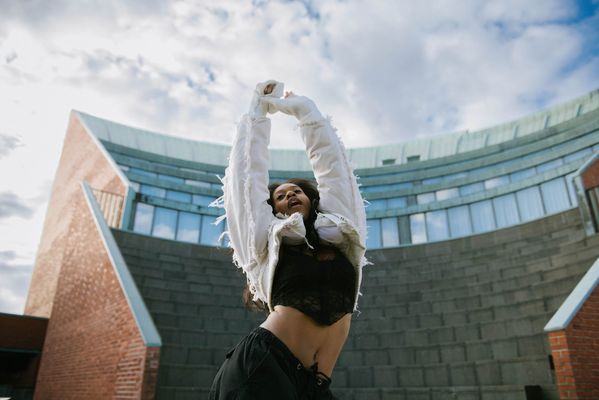
Can we make creative thinking and culture visible through cinema?
Text: Tiiu Pohjolainen
Translation: Tomi Snellman
Video: Iiris Sjöblad
Photos: Hayley Lê
Clouds hang heavy over the beach at Kallahti, a neighbourhood in eastern Helsinki’s Vuosaari district. The setting is beautiful, but the scene is absurd. A group of people pose at the tip of the headland, with children dressed in peculiar fabrics, others spinning, some walking into the water. The camera seems to follow each and every one of them. Then, it starts to snow.
One of the dozen-strong film crew members yells out: ‘All the seasons in a single day of shooting – again.’
The people on the beach are shooting a scene for a film about radical creativity. That’s why the camera tracks art student Saban Ramadani as he walks to the shoreline again and again, wrapped in pale strips of flowing fabric. And that’s why mathematics professor Pauliina Ilmonen spins around again and again, dressed in a pink outfit dotted with flowers.
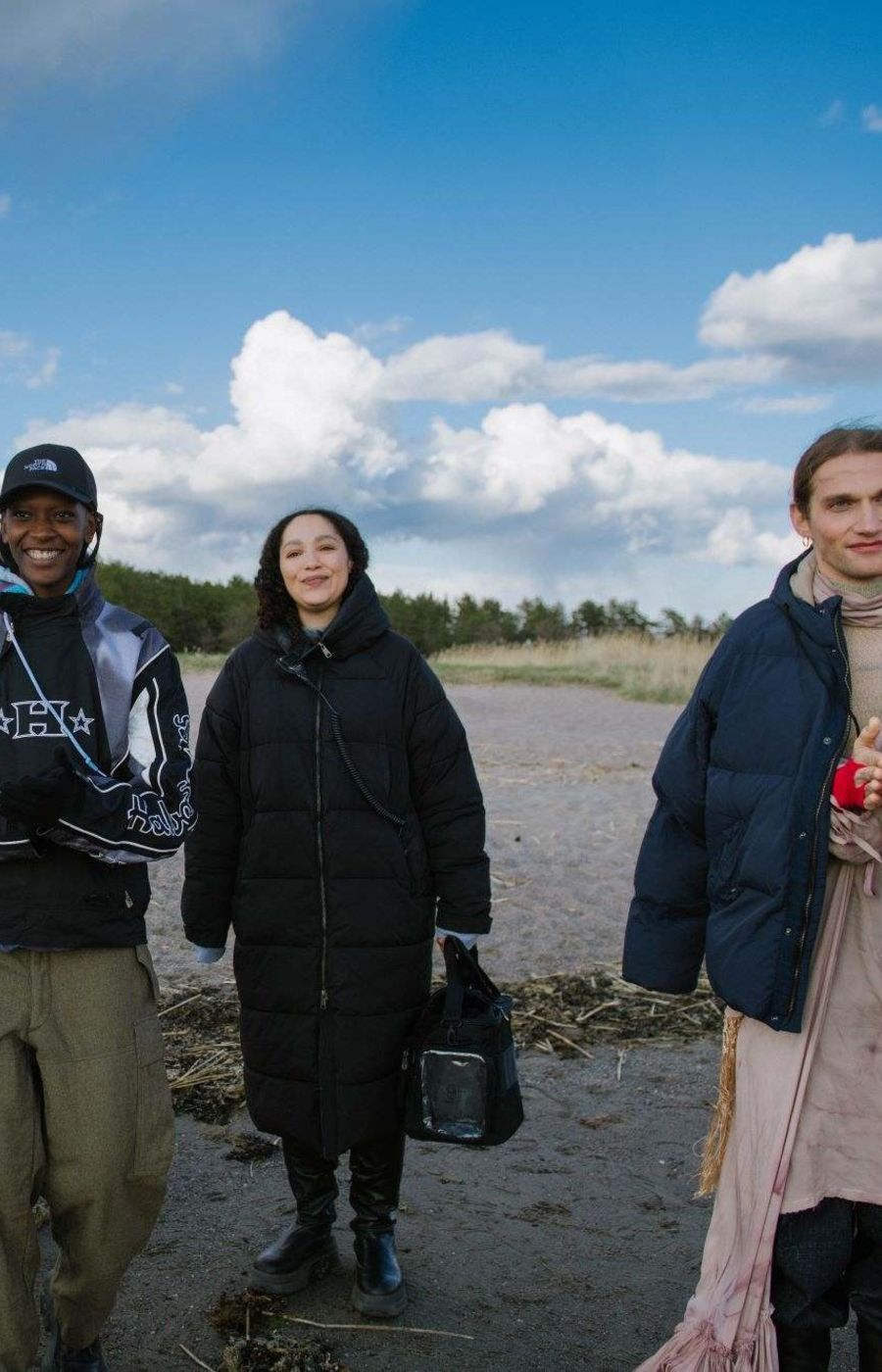
Behind the camera, a crowd follows the shoot. The second the camera stops filming, costume designer Marié Iradukunda hurries to Ramadani to wrap him in warm clothes. Make-up artist Jennifer Appleton comes over to check her work. In the background, set designer Ruut Mantila sweeps her eyes over the entire set.
I thought I had come to watch the filming of a dry documentary. I never expected to find myself on a beach in freezing weather, nor had I thought the director would arrive on set wearing sequin pants.
I had assumed that a film produced by a university would focus on innovation and feature talking heads in suits – even one on radical creativity.
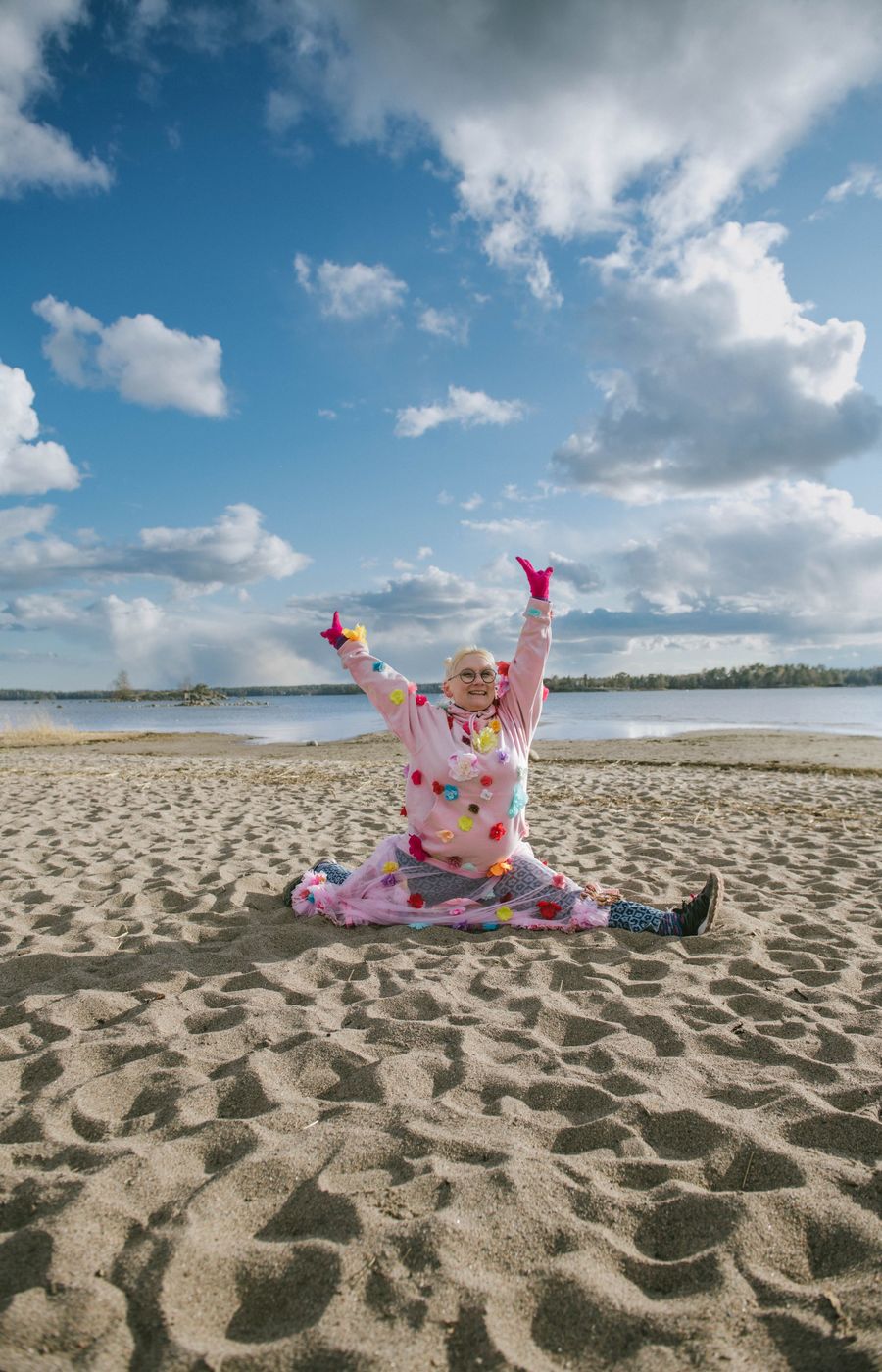
What, then, is radical creativity, the subject of the feature-length documentary?
We can say, at least, that it’s not an asset earmarked for some specific industries, nor is it a skill-set reserved for professionals in art, culture or marketing.
To pinpoint the core of radical creativity, you can start by pairing the power of imagination and play with innovation and problem solving. Don’t forget to add a dash of sisu, the spirit of fortitude or spunk commonly said to have led to the post-war economic boom in Finland.
Radical creativity is about breaking free from the compulsion to succeed; you must let the creative process guide you. In a university setting, that can translate into active – or even foolhardy – efforts, where students not just attend lectures but also head out to go do something and experiment. Radical creativity also produces things that don’t always hit the bullseye.
Risk-taking is an inherent part of the process.
Aalto University has produced a film to highlight its creative culture, and the project is mainly in the hands of film department alumni. This is no student project or corporate video; it’s rather an independent hour-long piece created by professionals, led by Emilia Hernesniemi who has written and directed the documentary.
For Hernesniemi, radical creativity is actually the film’s main character.
‘Instead of a person who I’d correspond with before filming – to get to know them and build trust – the protagonist in this project is an abstract concept.’
Hernesniemi admits that the subject of the film is difficult. That’s what makes it so interesting to film.
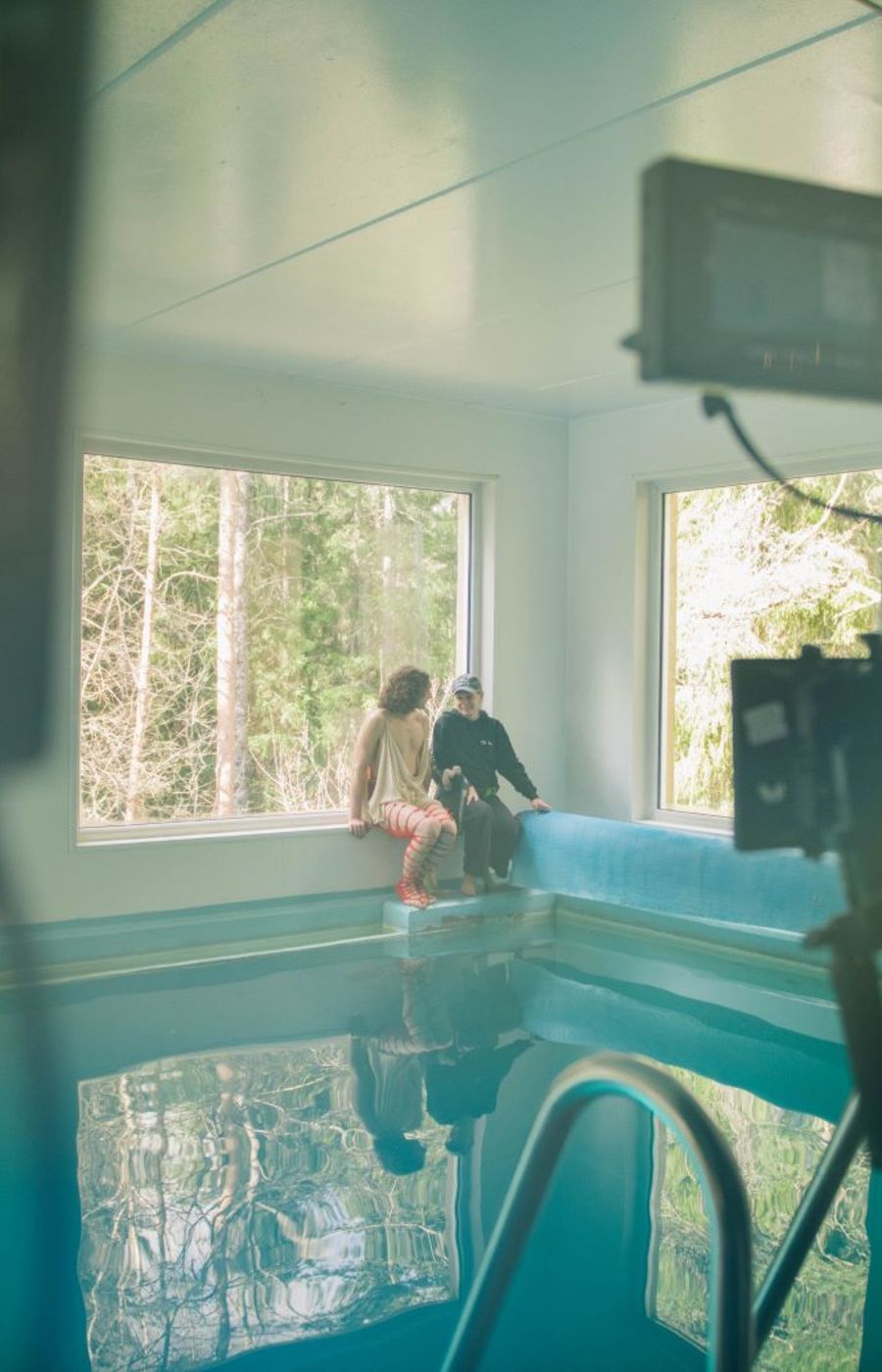
‘This is a test for us all. Everyone involved has had to think about how to address radical creativity.’
Emilia Hernesniemi
The schedule is exceptionally tight for the film industry: the premiere is set for less than a year after project launch. The work will, however, pay off; in addition to the documentary, the footage will be eventually used in teaching, including a globally accessible, free online course on radical creativity.
It’s obvious that radical creativity can mean very different things, depending on the context, whether business or chemistry or visual arts. Radically creative thinking is not exclusive to some specific field or context: it can be seen in research, social thinking, business, education, art or design.
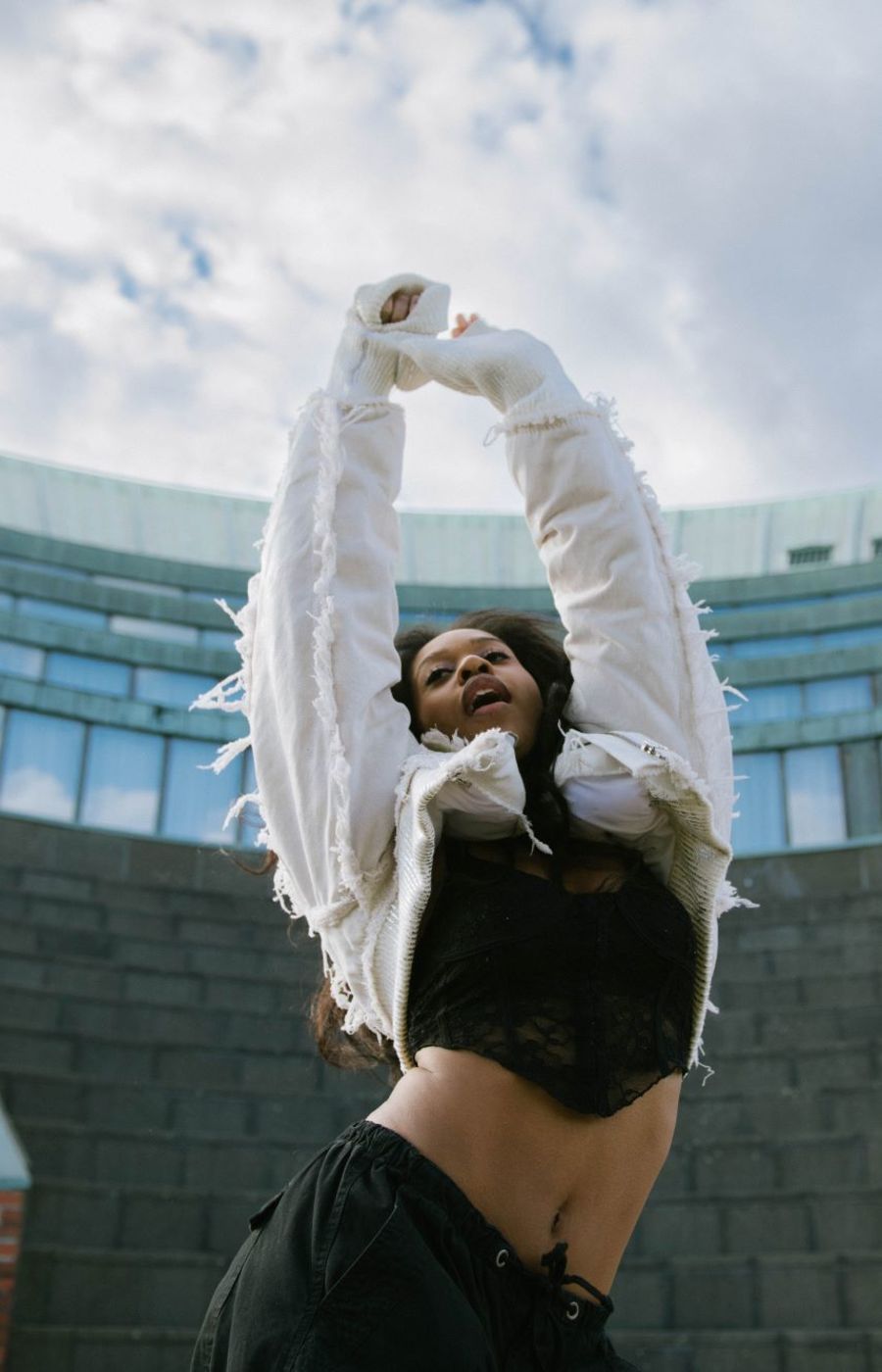
In Hernesniemi’s film, people from all kinds of backgrounds speak about the concept from all kinds of angles. One challenge in casting was, in fact, an excess of candidates. With its students, teachers, researchers, artists, stakeholders and start-up founders, the university was faced with a far greater number of compelling interviewees and projects than could be included in an hour-long film.
‘We have 50 hours of beautiful and brainy footage that will be edited into a sixty-minute film,’ says Hernesniemi.
Her challenge in the editing room will be to say goodbye to an endless amount of rich and cherished footage.
Chemistry student Imose Iduozee dances on the steep stairs of the amphitheatre on campus. The choreography is her own, performed to a song called Joro by Afrobeat artist Wizkid. On the quiet Friday night when the scene is filmed, a few passers-by in Alvar Aalto Square turn their heads as they take in the solo performance, which merges street dance with other genres.
Iduozee dances in the documentary, although at times it can be difficult to manage both studies and dance.
‘School is quite demanding, so it’s not easy to juggle my studies with an intensive hobby,’ she says. Iduozee, 22, has hurried through her second-year studies in chemical engineering in order to start her thesis early.
She felt shy about doing the dance scene, even nervous. A choreographer and dancer, Iduozee rarely performs solo in front of an audience. She is more at home as a backup dancer at gigs, such as the one where she was spotted by Nita Rehtonen, the film’s creative producer.
Iduozee has thought a lot about radical creativity as a concept. It is something that recognises no limits. During her studies at Aalto, Iduozee’s own approach has been particularly influenced by a course on academic thinking, which was a complete departure from what she was used to as a chemistry student.
For example, a question in the course might be about how many drops hit the ground if it rains for two hours. There was only the question, with no further information, and in truth no real answer either.
‘You just had to start thinking about the size of a drop of rain,’ recalls Iduozee. ‘For me, the course was really about creative problem solving.’
Aalto University aims for all students to be trained in radically creative thinking and practices as part of their studies.
You could say the idea was pioneered by students in a course on space technology back in 2010, when they told teacher Jaan Praks that they wanted to build a satellite and send it into space.
That spring, development of the Aalto-1 satellite began as a student project.
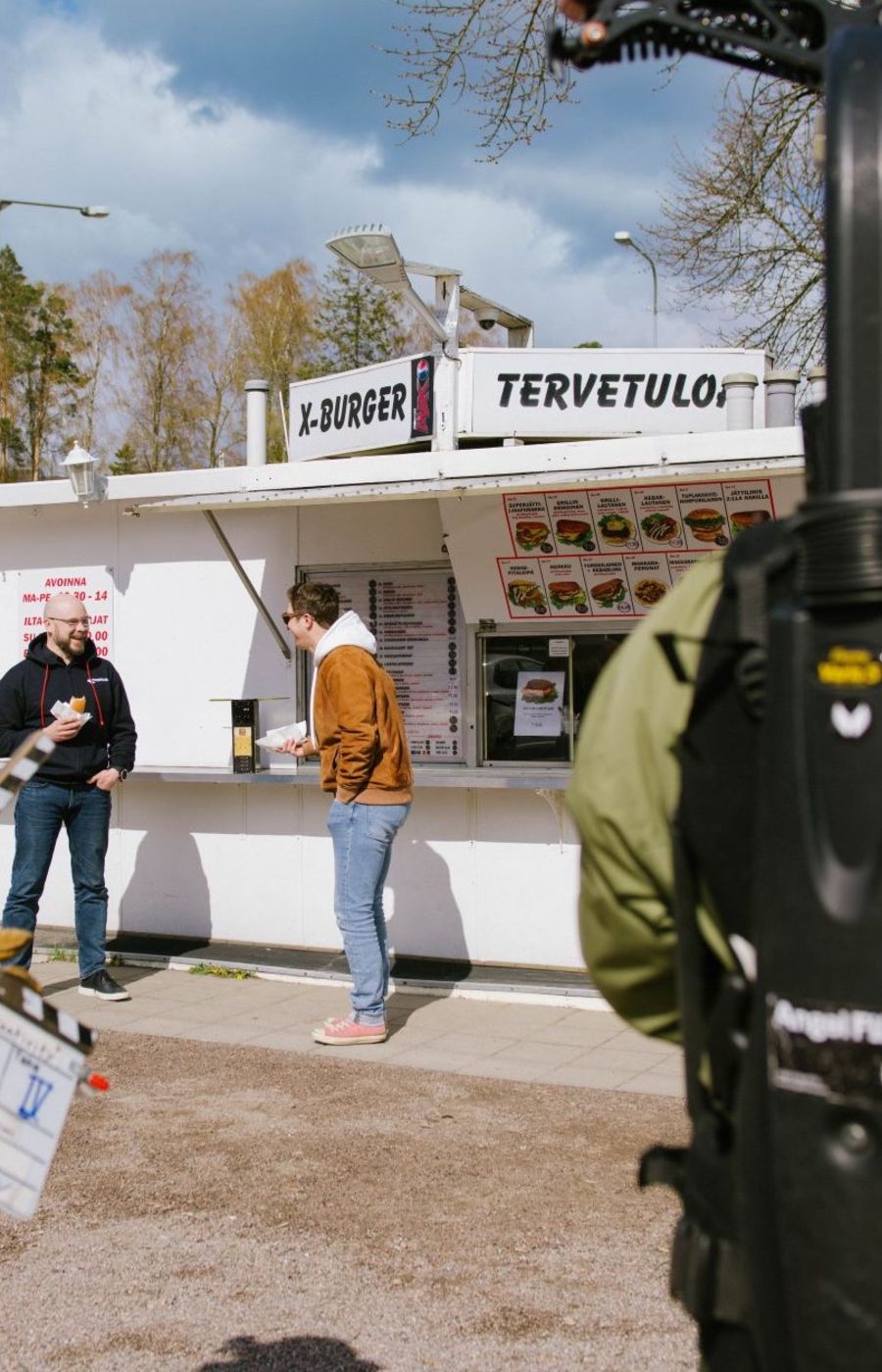
‘It was a case of radical creativity in that we went all-out on a project with no guarantee of an outcome,’ says Praks, who is now an assistant professor.
When the students started to build the first satellite, no one seemed to believe in Jaan Praks or his team.
‘They just smiled politely at us and our enthusiasm.’
Back in 2010, the young teacher was quite aware of the risks. ‘I must admit I was scared at times. After all, I was risking my own career in the process,’ he says today with a laugh.
The risk paid off: today Praks is known as the man who led the construction of Finland’s first-ever satellite. He is also an educator who has trained a new generation of space technology experts. One of the first trainees, Rafal Modrzewski, appears in the documentary with Praks. Today, Modrzewski is the CEO of ICEYE, a company born out of the satellite project. On camera, the men present a satellite only slightly larger than a milk carton.
A day of shooting in front of a hot dog stand in Otaniemi finally makes both men shiver from cold. Before Modrzewski rushes off to his next appointment, Praks has time to ask what prompted the respected scientist to find time in his calendar to shoot the scene.
‘I want to promote awareness of space technology in Finland,’ Praks says. He has talked about mini-satellites and space in nurseries, businesses and podcasts, so why not on film as well?
‘At its core, radical creativity is all about breaking boundaries,’ says Praks. ‘And when you’re there, you don’t think about what your actions look like to outsiders – you’re working for a cause you feel is important.’
So why is a professor eating a hot dog with a former student in a documentary about the university? Why is Saban Ramadani diving underwater, and why are children playing on a beach in Kallahti? I ask writer-director Hernesniemi.
‘I never use reportage as a format for a documentary. My work reflects my background and education.’
Many people, in fact, know Hernesniemi from the world of fashion.
‘Fashion is all about searching for new things by investigating visual material at a dizzying pace,’ she says. ‘My films are not fashionable at all, but their visual aspect, the need to explore visual material, comes from my background in fashion design.’
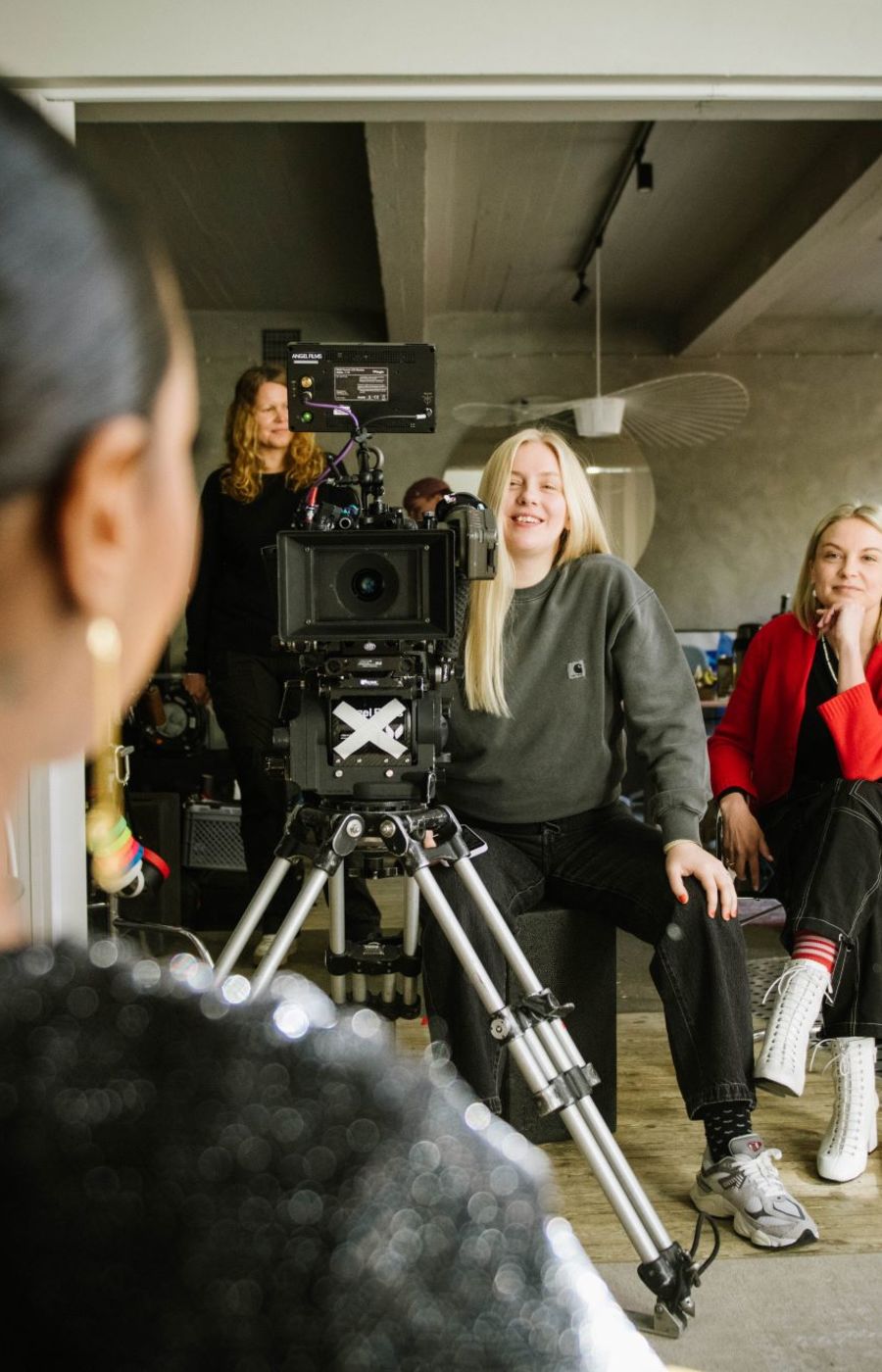
She enrolled in the Fashion Design programme at the University of Art and Design (now Aalto University) when she was 19. A year after earning her master’s degree, she had already founded the fashion label R/H with Hanna Riiheläinen.
Years went by as Hernesniemi worked with clothing, fashion and visual conceptualisation. She even taught fashion marketing at Aalto University and elsewhere.
Then in 2018, she applied and was admitted to study at her alma mater for a second time.
‘As an 18-year-old girl from a suburb of Oulu, I was interested in fashion and design. Growing up, I wanted to study to be a documentary film director.’
Cinematographer Iiris Sjöblad, who shot the documentary, started her studies the same year. ‘We have worked together a great deal and very intensely, Iiris and I.’
Emilia Hernesniemi believes that there is a strong link between visual industries: after all, she herself spent more than a decade creating both films and photographs for the fashion industry.
Fashion design was a good beginning for a film director, starting with project management. And film is a craft, too. Whatever the material, it’s cut and fitted to purpose, be it in fashion or filmmaking.
‘I think it’s cool to be part of the generation that’s building the Finnish culture of today. Visual culture is strong in Finland,’ Hernesniemi says.
‘Visual arts, graffiti, fashion, film, design – they all bring people closer together. We can develop our cultural capital by going to the cinema, taking an interest in local fashion or enjoying Finnish contemporary art.’
Hernesniemi’s documentary reinforces cultural capital by telling the story of a university that holds dear a culture of free experimentation and practice.
The premiere of the Radical Creatives documentary was 15 February 2024.
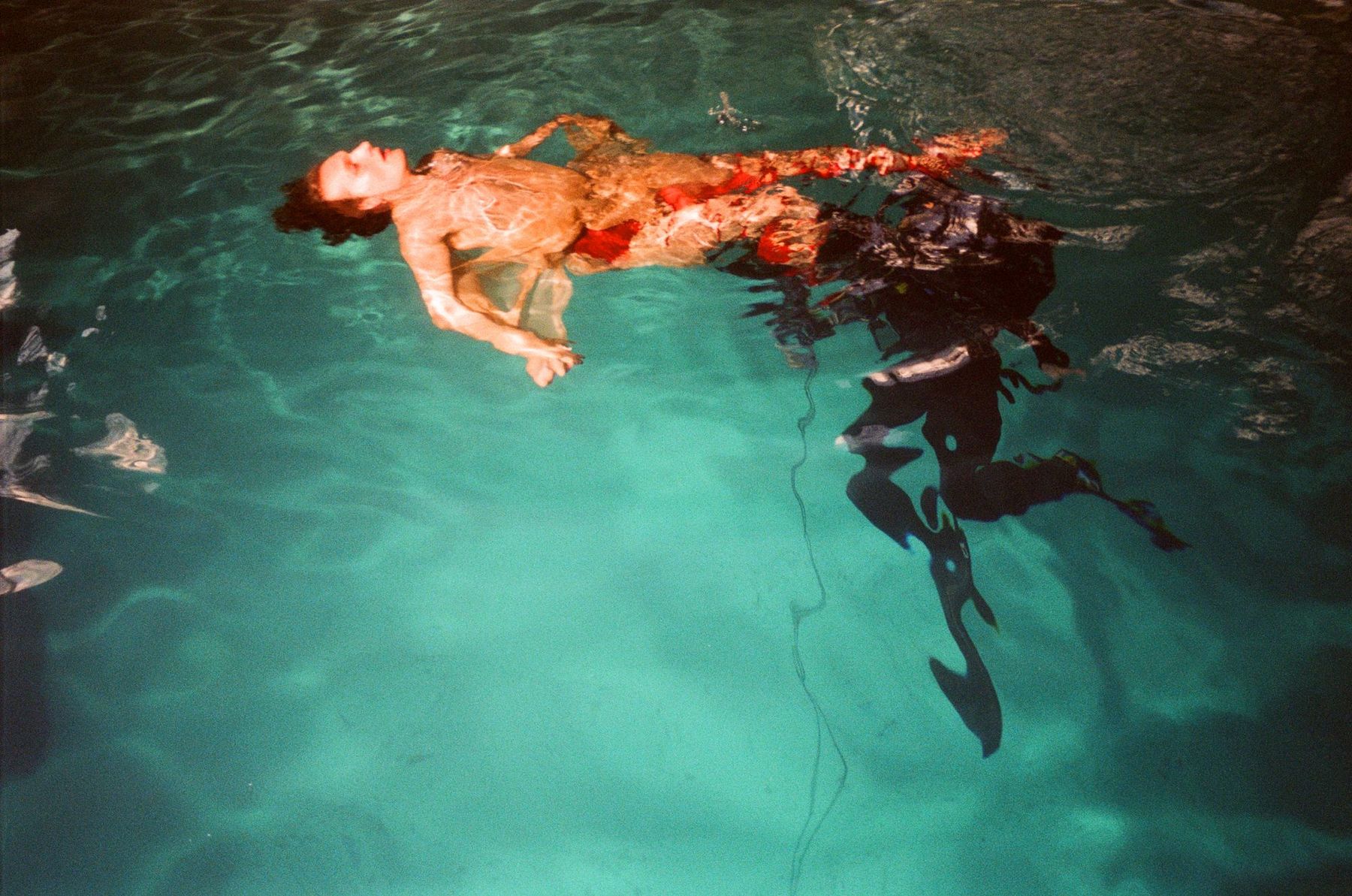
Aalto University’s strategy has three overarching themes – sustainable solutions, radical creativity and an entrepreneurial mindset – that are embedded in everything the university does.
‘Radically creative thinking and doing can be seen in how Aalto University was founded: it was an atypical combination of excellence in different fields. For us, creativity is a broad subject that touches all of society, one that deserves to be explored artistically through an independent work. We want the topic of the film to touch and inspire ideas in as many viewers as possible,’ Aalto University President Ilkka Niemelä explains.
The film’s executive producers are Milla Kokko from Aalto University and Kimmo Syväri from the production company Koski Syväri. The producer of the film is Ilona Malinen, also from Koski Syväri team.
It's quite unusual, even globally, for a university to choose radical creativity as a strategic theme, Milla Kokko says. ‘In everyday creativity, small steps are taken and familiar things are done creatively. Radical creativity challenges – and shifts – the paradigm, like in the way cars once revolutionised transportation.’

What is radical creativity? How do uncertain and seemingly impossible projects move forward? Welcome to the screenings of the documentary directed by Emilia Hernesniemi.

Companies and organisations can arrange screenings to encourage creativity and experimentation

There is no set recipe for changing the world. It takes courage and grit to boldly create something new without fearing failure.